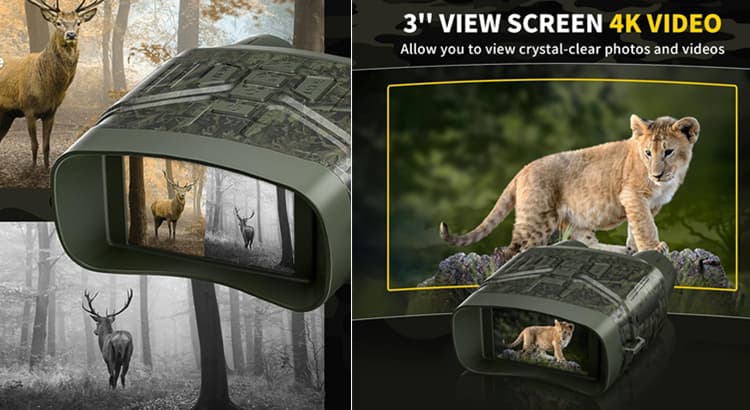Hunting, a pursuit deeply rooted in precision and observation, necessitates the use of optical tools that enhance the hunter’s ability to navigate the terrain and spot elusive game.
One critical question that surfaces when choosing binoculars for hunting is: What binocular magnification is best for the task at hand?
In this exploration, we delve into the considerations, advantages, and optimal magnifications that cater to the unique demands of the hunting environment.
Understanding Binocular Magnification
Binocular magnification determines how much closer observed objects appear. While high magnification brings distant details into focus, it’s crucial to strike a balance that provides a clear view without sacrificing other essential factors.
Field of View and Situational Awareness
A wide field of view is paramount in hunting scenarios where situational awareness is key.
Lower magnifications, such as 8x or 10x, offer a broader field of view, allowing hunters to scan large areas efficiently and track the movement of game.
Stability and Handheld Use
Higher magnifications can amplify hand movements, potentially causing image instability.
Given that hunters often rely on handheld binoculars, a moderate magnification level, like 8x, strikes a balance between detail and stability during observation.
Long-Range Observation
For hunters engaged in long-range observation, a slightly higher magnification, around 10x, can be advantageous.
This provides enhanced detail when scouting game at a distance, especially in open landscapes.
Low-Light Conditions
In the early morning or late evening, when light is limited, it’s essential to maintain image brightness.
Lower magnifications gather more light, ensuring a clearer view in low-light conditions, which are common during prime hunting hours.
Portability and Weight
Hunters often cover significant distances on foot, making portability a key consideration.
Binoculars with moderate magnifications tend to be lighter and more portable, contributing to the overall comfort of the hunting experience.
Environmental Considerations
Different hunting environments demand varying levels of magnification.
Thick forests may benefit from lower magnifications, while open plains may necessitate higher magnifications for effective game spotting. Adaptability to diverse terrains is crucial.
Technological Features
Some modern binoculars come equipped with technological features like image stabilization and rangefinding capabilities.
While these can enhance the overall hunting experience, they should complement, not compromise, the optimal magnification for the task.
Real-World Testing and Reviews
Real-world testing and user reviews provide valuable insights into how specific magnifications perform in actual hunting scenarios.
User feedback can help prospective buyers make informed decisions based on practical usage.
Conclusion
In conclusion, determining the best binocular magnification for hunting involves considering a range of factors, including field of view, stability, environmental conditions, and the specific requirements of the hunting terrain.
Whether tracking game through dense woods or scouting distant targets in open fields, hunters can optimize their experience by selecting binoculars that strike the right balance between magnification and practicality.
As hunting technologies continue to advance, hunters can expect further refinements in binocular design, offering tailored solutions that enhance their ability to navigate the wild and make every hunting expedition a memorable and successful adventure.





